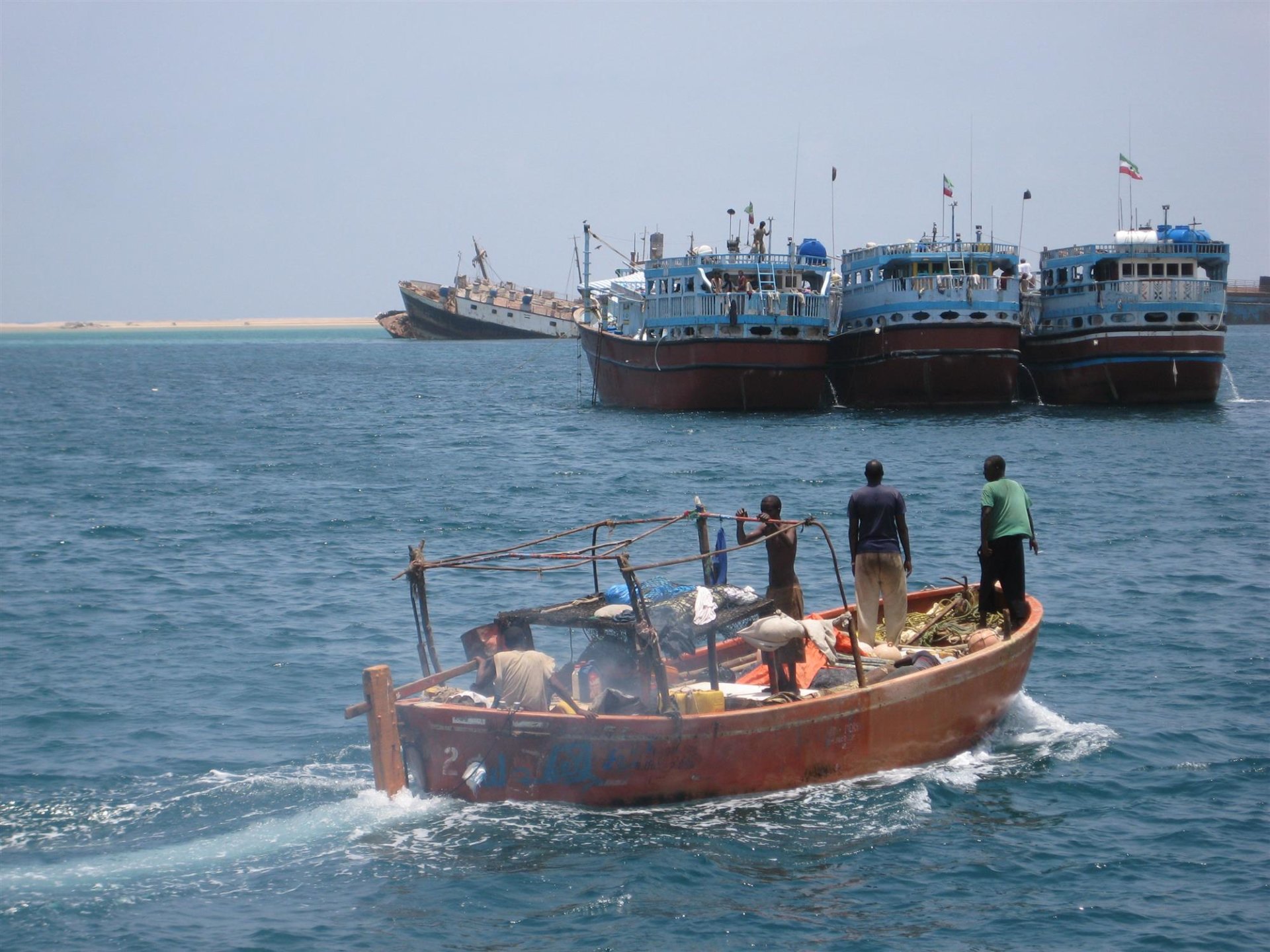
Blog
Is Maritime Piracy Still a Thing?
Posted in General, Maritime Piracy
For centuries, pirates have been a cultural institution of sorts, glamorized in classic literature (Treasure Island), the cinema (the Pirates of the Caribbean movies), and various other productions of Western society.
The origins of piracy reach back literally thousands of years, yet the iconic image of the pirate—complete with eye patch and heavy jewelry—stems from the classic period of piracy, roughly the 17th to 19th centuries, when these hardy adventurers wreaked havoc along the Persian Gulf and the Caribbean.
It took a concerted effort from European powers, including legislation such as the General Maritime Treaty of 1820, to put an effective end to pirate activity, at least as it was understood at the time.
Pirates did not go away for good, however. In fact, they constitute a serious threat that plagues the contemporary maritime industry, resistant to coordinated attempts to eliminate them. It’s not difficult to understand the persistence of this sort of criminal activity.
Piracy, like all crimes motivated by a desire for financial gain, is always a possibility wherever valuable goods can be seized. This is certainly true on the high seas, where substantial revenue is there for the taking in the form of cargo and even hostages.
Maritime piracy is far from an insignificant phenomenon in the modern era, and its reach is more widespread than most people suspect. Let’s take a closer look at this problem.
Where Piracy Happens

Somalia – For many casual observers, modern piracy is strongly associated with this beleaguered African country—and for good reason. In 2009 alone, there were no fewer than 51 incidents off the coast of Somalia.1 This made Somalia virtually synonymous with piracy, but it has to be said that this isn’t an altogether fair assessment.
In recent years, the incidence of Somali piracy has dropped precipitously, to the point where this country no longer holds the distinction of being the world’s hotspot for this type of criminal activity. Even so, Somali piracy is still a phenomenon that must be contended with.
Indonesia – The world’s largest island country, Indonesia is an archipelago in Southeast Asia that encompasses over 17,000 islands. It is also notorious for a very high rate of pirate activity, much of which occurs in the Strait of Malacca (pictured below), an extremely busy shipping route used to transport a vast amount of merchandise from Japan and China.
All that valuable cargo passing through the strait has proven to be an irresistible target for pirates. The year 2003 saw a staggering 121 hijackings of commercial vessels in this region—over 20 percent of the global total.2 Since then, piracy has declined dramatically, but it remains a major problem in Indonesian waters.
Bangladesh – Widespread poverty and an understaffed national coast guard have left the nation of Bangladesh vulnerable to pirates, who have eagerly exploited local conditions for their own profit. Piracy attacks, mostly dealing with kidnapping fishermen for ransom, has taken its toll on the national economy, which is heavily dependent on its fishing industry.
The good news is that Bangladesh has taken steps in recent years to quell this problem. Its participation in the U.S.-led Cooperation Afloat Readiness and Training (CARAT) exercises is considered largely responsible for reducing—though not eliminating—the threat of piracy in the Bay of Bengal.3
Nigeria – In West Africa, over seventy percent of all maritime piracy can be traced to Nigeria.4 The Gulf of Guinea is the local playground for regional pirates, whose activities are mainly devoted to capturing valuable cargo, often oil, rather than taking hostages.
These are not the only areas where piracy happens—Peru and the Ivory Coast have also encountered pirates, to name a few other examples—but they are the primary locales. As we shall soon see, maritime piracy is more than just a nuisance—it’s a wide-ranging social problem that gobbles up huge amounts of resources.
Why Piracy Is Harmful
Piracy causes major harm to society. The organization Oceans Beyond Piracy calculated the global cost of piracy for the year 2011 at $6.6 to $6.9 billion.5 The damage wrought by piracy takes a variety of forms, including but not limited to the following:
Fatalities – Many pirates operate by taking hostages and holding them for ransom. It’s a tactic that has proven quite profitable—but it can also lead to tragedy. Some encounters between commercial vessels and pirates devolve into violence. In Southeast Asia, 136 people were killed at the hands of pirates over the years 1995 to 2013.6 A far greater number of innocents have suffered serious injury during pirate attacks.
Costlier Shipping Practices – One tactic for keeping away from pirates is to ship materials at very fast speeds across the water. That’s what a lot of shipping companies have resorted to in an effort to reduce the risk of encountering unfriendly ships.
Unfortunately, this practice substantially increases the expenses involved in maritime transportation. Another tactic that shipping vessels sometimes use is to follow an indirect route to their destination—which, of course, takes longer and costs more money.
Increased Insurance Rates – The likelihood of stolen cargo means that shipping valuable goods is more risky than it would be under normal conditions. This also means that insurance rates must be raised to compensate for the increased risk.
Higher Security Expenses – There was a time when it was considered unnecessary for shipping vessels to employ armed guards and utilize anti-piracy equipment. That time is in the past, however. The price of maintaining adequate security is another expense that shipping companies must bear.
Damage to Local Economies – As we have mentioned, piracy in Bangladesh has caused serious injury to the nation’s fishing sector—and this is only one example of a country-wide economic devastation that can be attributed to these maritime interlopers.
Drain on Limited Military Resources – Many impoverished nations struggle to mobilize the kind of military response needed to discourage piracy.
There are a variety of laws on the national and international level aimed at prosecuting pirates and reducing the incidence of these types of crimes.
The State of Piracy Law
Piracy that takes place within the territorial waters of a nation can be prosecuted by that nation. In the U.S., the crime of maritime piracy falls under 18 U.S.C. § 1651, which states, “Whoever, on the high seas, commits the crime of piracy as defined by the law of nations, and is afterwards brought into or found in the United States, shall be imprisoned for life.”
However, what happens when piracy occurs out on international waters? In this case, international law takes over—specifically, the United Nations Convention on the Law of the Sea (UNCLOS). This international agreement stipulates that “all States shall cooperate to the fullest possible extent in the repression of piracy on the high seas or in any other place outside the jurisdiction of any State.”
In practice, there has been some confusion as to which country should take on the responsibility of prosecuting pirates captured out on the high seas. When the United States has assumed this role, it has often imposed very harsh penalties, in accordance with 18 U.S.C. § 1651.
If you or a loved one has been injured during the commission of a pirate attack, it is important to understand that there is legal recourse available. Under the Jones Act, victims of pirate assaults may be entitled to substantial compensation. Contact Schechter, Shaffer & Harris, L.L.P., for a free consultation.














